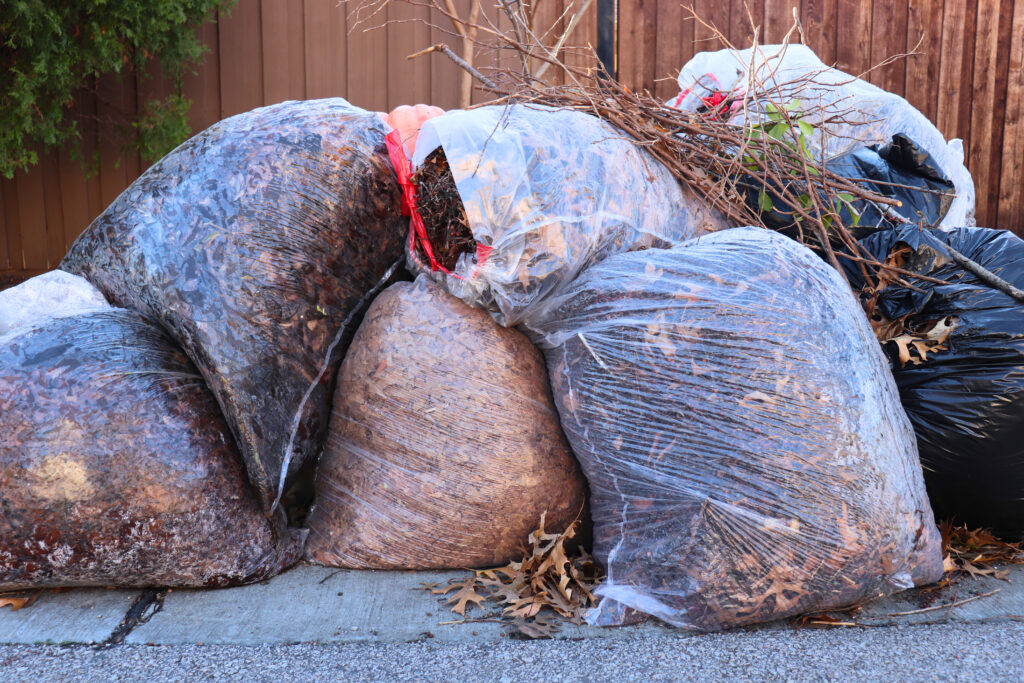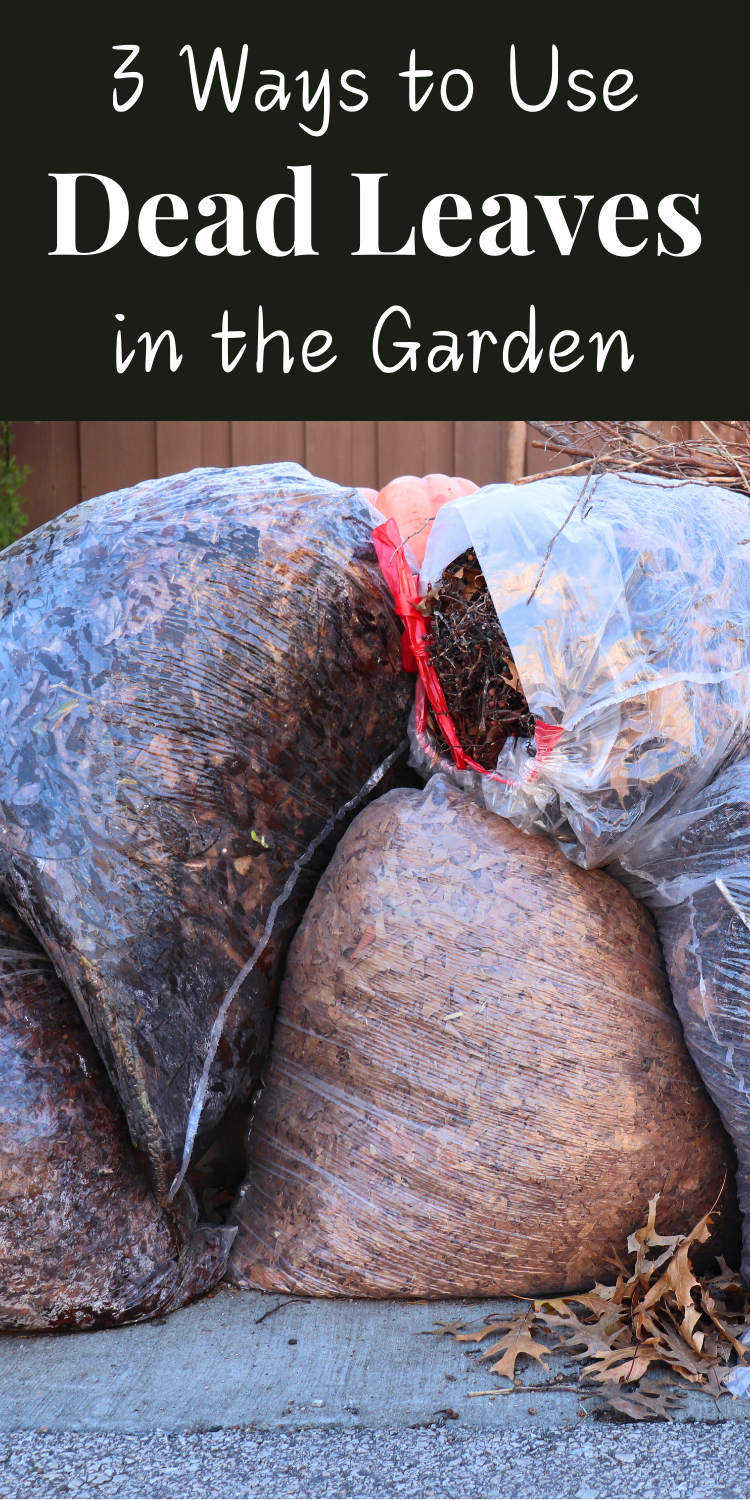Every Autumn there comes the dreaded leaves. Piles upon piles of them. As someone who grew up in a place where Autumn doesn’t exist, I had no idea what a pain raking leaves was. It wasn’t until my husband showed me how to compost leaves as well as several other uses for them that I began to actually look forward to the dead foliage that would cover our yard every year.

We use our dead leaves for both compost and mulch. We have even talked about raking our friend’s yards to get their leaves too… The point is that dried leaves are a welcome and free asset for any gardener and should be used as much as possible.
1. Add Leaves to Your Compost
Dried leaves are a wonderful source of carbon or “brown” material for your compost. In fact, our leaves account for about 95% of the “brown” material we add to our compost in a whole year. If you have enough leaf fall, you won’t have to be saving any cardboard boxes or even buying paper or wood chips for your compost.
How to Compost Leaves
STEP 1: Shred dry, fallen leaves by going over them with a lawnmower, or by using another tool specific to shredding leaves.
STEP 2: Add leaves to your compost according to the 70:30 rule (70% “brown” material, 30% “green” material) and mix.
STEP 3: Store extra leaves in bags in your garage or a corner of the yard to be used throughout the year.

NOTE: Alternatively, if you don’t want to store a bunch of leaves or you don’t maintain your compost that closely, throw all the leaves you want into your compost without worrying about the ratio. It will still slowly break down as you add “green” material throughout the year. It will just take longer to decompose into soil. Just make sure you stir it around throughout the year to help it break down evenly.
To learn more about how to compost or how much “brown” material you should be adding, check out our easy guide on composting for beginners HERE.
2. Make Leaf Mold
Even if you don’t have existing compost, you can still use your dead leaves for your garden by making leaf mold. Leaf mold is just leaves that have decomposed without other added materials. It will not be as nutrient-rich like regular compost, but it will still greatly improve your soil’s structure and drainage. This is extremely helpful if you have sandy or clay-heavy soil.
How to Make Leaf Mold
STEP 1: Place fallen leaves into a designated pile of your yard or into large leaf bags and spray with some water.
STEP 2: Leave the pile(s) for about a year to decompose, spraying with water during dry periods to keep it moisturized.
STEP 3: Mix decomposed leaves into your soil before planting for the season.
NOTE: The length of time needed for leaf mold to break down can vary depending on your climate. Prepare for a year to two years depending on the size of your pile(s) and your climate.
3. Shred Leaves for Mulch

This one is great for all those out there who do not have a desire to compost. Keep shredded leaves stored through the Winter to use as mulch in your garden next Spring. Dry leaves are a great organic material that are free to use and effective at keeping weeds at bay, insulating plants, and will eventually just break down into your soil.
No compost pile needed, just shred them up and throw them on!
How to Mulch Leaves for the Garden
STEP 1: Shred leaves (see STEP 1 in the first list item of this post for details).
STEP 2: Store your dry, shredded leaves in bags to be used as mulch in the Spring and Summer.

Benefits of Dried Leaves in the Garden
- Dried leaves attract earthworms and beneficial microbes to your soil.
- They naturally insulate plant roots, helping to protect plants from extreme temperatures.
- They improve the structure of your soil.
- Leaf mulch slows the evaporation of moisture when plants are watered.
- They are full of micronutrients such as potassium, calcium, iron, etc.
- Leaf mulch keeps weeds at bay.
FAQ:
Is it safe to shred leaves using my lawnmower?
Some lawnmowers have a specific setting to mulch or shred leaves, but even if you have a basic lawnmower, you can still shred leaves. Just be sure to not go over a huge pile of leaves. Mow over more shallow leaf fall and be sure to check for branches, sticks, or rocks that could damage your machine.
Do I have to shred leaves to make leaf mold?
Nope! In fact, the same goes for composting leaves. Shredding is really only necessary to speed up the process.
What is the difference between leaf mold and putting leaves in compost?
The only difference between the two is that leaves in compost have “green” material to speed up their decomposition and add other nutrients necessary for healthy plant growth. Leaf mold is JUST leaves with water added to help them break down. Leaf mold takes longer, but is less hands-on (not that composting takes a whole lot, just more). Leaf mold is great, but it should not be the only source of nutrients for your plants as it is short on a lot of other great things your soil needs to produce a thriving garden.


Leave a Reply